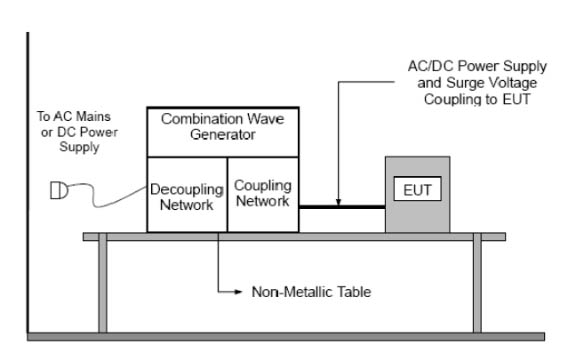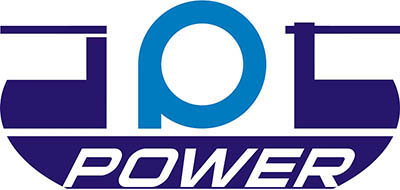Voltage surges pose a threat to many devices powered by mains electricity. Unless designed for the intended environment, surges can damage both power supplies and the devices they power. This article discusses the basics of surge protection, including identifying the causes of voltage surges, establishing familiarity with regulatory surge test standards, and exploring surge suppression circuits and components.

Surge Test Setup
The three primary causes of surges are lightning strikes, load transients, and faults. Surges induced by lightning strikes typically carry more current at much higher voltages than most electronic systems can handle. These voltage surges can immediately lead to failure of unprotected devices. Surges on the AC supply line can also be caused by other devices on the electrical circuit being turned on or off. Reactive loads, such as motors or capacitor banks, may induce voltage spikes that cause failure of unprotected devices.
Surge protection standards have been developed to classify and provide guidance on necessary levels of protection. The most common standard for power supplies is IEC 61000-4-5 from the International Electrotechnical Commission. It defines standardized test methods and different levels of protection based on installation class and coupling methods. Surge suppression circuits and devices must be employed to protect power supplies and their loads. Two main classes of surge protection circuits are clamps and crowbars.

IEC 61000-4-5 testing standard
Clamp circuits prevent voltage from exceeding a chosen clamping voltage. Transient voltage suppression diodes (TVS) and metal-oxide varistors (MOV) are commonly used as clamp devices. TVSs absorb excess energy and clamp voltage, while MOVs have a high resistance at low voltage and low resistance at high voltage. Crowbar circuits are another type of surge protection circuit. Crowbar devices short the circuit nodes together, bringing the voltage close to zero. Gas discharge tubes (GDT) are commonly used as crowbars.

Off-the-shelf power supplies may or may not provide internal surge protection. Manufacturers typically offer a range of options from no protection to maximum protection, and reference designs are often provided to improve inherent performance levels. Designers must pay attention to the datasheet to ensure that manufacturers’ external circuits meet the appropriate performance level.
In conclusion, while individual voltage surges may be unpredictable, it is possible to evaluate a system and anticipate the types of surges it might experience. The appropriate level of surge protection will vary depending on the application and environmental factors, and experts like JPTPower can help select the right power supply for specific circumstances.



One Response
The article was written professionally